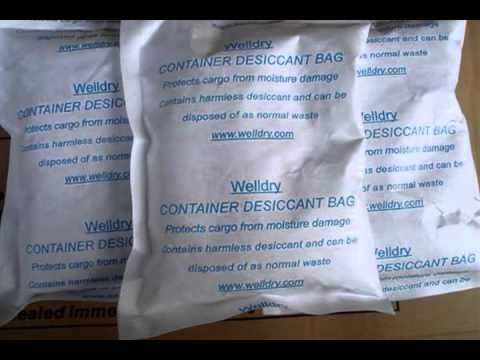Even though you can't completely stop moisture from building up, there are ways to keep condensation from getting out of hand in your cargo container.
Use the right pallets
Using pallets to store
your products is common, but it's important to think about the amount of
moisture in varieties of wood. The decking industry is under pressure to
provide decking quickly, requiring fresh wood, often overloaded with moisture
content. If wood is used while damp, it can add moisture to the air and worsen
condensation in the shipping container. Your decks may not be new but were made
from old wood stored in cool, damp places during cold winters. These pallets
are probably just as full of moisture.
Plastic pallets can
help reduce condensation from the shipping container, as they do not absorb
moisture from the air. If you need to use wooden pallets, make sure these
pallets are dry before loading.
Use desiccants
Desiccants absorb
excess water from the air, effectively lowering the inside of the container's
dew point. Desiccants are often put inside a shipping container by the shipping
company to reduce the amount of moisture that comes from the products, the
packaging, or changes in temperature.
There are many
different kinds of desiccants. Depending on what you want and the goods in your
load, you can choose from the following types of desiccant:
- Container Desiccant –
Container
desiccant absorb moisture in a shipping
container and can be hung from the ceiling and walls to help keep the air
dry. As the desiccant absorbs water, it lowers the dew point temperature.
This keeps condensation from forming on the walls of the container.
- Desiccant Blankets
– This type of desiccant is placed or hung over the top of the products in
the container. It is designed to prevent condensation from accumulating in
the air and protects covered merchandise from water droplets. These
blankets have a membrane that lets air pass through moisture from the
merchandise to seep upwards through the blanket while offering a
leak-proof design that prevents moisture from settling in, also container
rain. Some desiccant blankets are made to make an airtight environment
that keeps moisture out. hot or cold air from flowing through the
container, thus reducing temperature changes that could cause
condensation.
- Desiccant Pads
– Desiccant wipes are essential when shipping refrigerated goods or
beverages. These pads are placed under the merchandise itself; In the
event of a leak, the pad absorbs additional moisture to prevent
precipitation inside the container and the proliferation of fungi. Many
desiccant pads come with a thermal barrier that keeps the temperature of
the container to prevent moisture buildup.
If you want to know
how to get condensation out of cargo containers, desiccants could be an
important part of the equation. Desiccants can help prevent condensation
buildup, but you must use the correct material and amount of material to
protect your cargo properly.
Consider dehumidifiers
Consider getting a
dehumidifier if you need to know how to stop condensation from forming in a
cargo container that you're going to store. If your shipping container has a
strong power source, you can use a dehumidifier to remove moisture from the
air. Don't forget that you will need to empty the dehumidifier of water on a
regular basis or set up a hose system that can pull the water out of the
container.
Make the house warmer
When you insulate your
shipping container, you can cut down on the amount of moisture in the air and
stop rain from getting into the container. Also, container insulation can keep
your cargo warmer than the dew point, which prevents condensation from
happening when temperatures are too different.
Improve ventilation
Proper ventilation can
reduce condensation by equalizing indoor temperatures with outdoor
temperatures. Ventilation channels hot, humid air out of the container, while
outside air with the same room temperature is drawn in. Humidity is reduced
when indoor temperatures are nearly the same as outdoor temperatures.
There are many ways to
install ventilation in a shipping container; However, ventilation is not always
the answer. If you're shipping goods in areas that normally have humid conditions,
ventilation could push out moist air and worsen condensation. If operating in
humid climates, avoid using ventilation to stop condensation in a shipping
container.
Get in touch with
Britwrap protective
packaging company, to buy best
container desiccant and other protective packaging equipment as it is the best
protective packaging company all over the UK.

Comments
Post a Comment